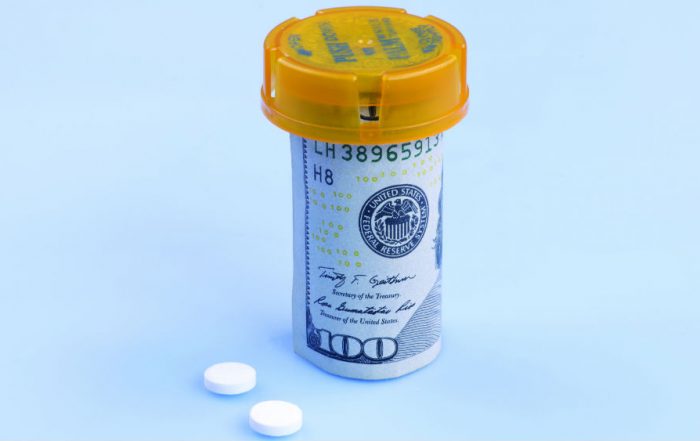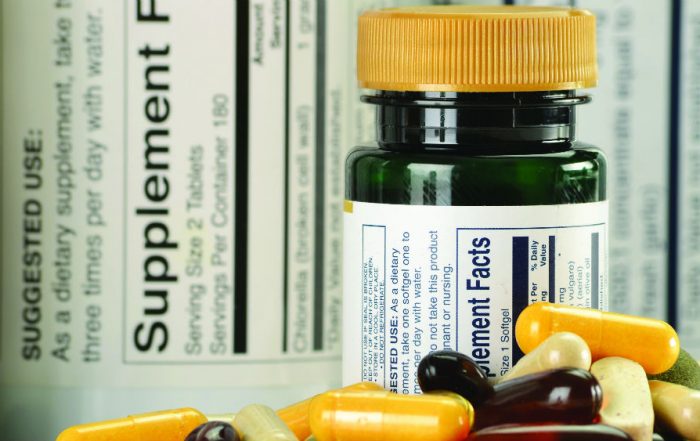
Capturing Postmarket Benefits in Device Compliance and Enforcement
by Paul S. Gadiock and James Ravitz
As part of its increased focus on the postmarket performance of medical devices, FDA released the guidance, “Factors to Consider Regarding Benefit-Risk in Medical Device Product Availability, Compliance, and Enforcement Decisions” (Postmarket Benefit-Risk Guidance).1 Intended to provide clarity regarding the factors FDA may consider in prioritizing resources for compliance and enforcement efforts to maximize device quality and patient safety, the guidance has very practical consequences that could affect whether a device remains on the market or is subject to a recall. At the heart of these considerations is the balance between patient access and patient safety—the same basic principles that FDA is weighing in its ongoing policy deliberations for off-label promotions.2 The definition of “patient access” can be fluid, however; with respect to off-label communications, it pertains to device information, whereas the policy in the Postmarket Benefit-Risk Guidance makes clear that patient access can also mean continued availability of the device itself. The Postmarket Benefit-Risk Guidance describes how FDA assesses benefits, risks, and other factors, such as uncertainty, to determine what action, if any, to take in response to emerging postmarket risks. It is the intent of this article to explore certain recommendations in the Postmarket Benefit-Risk Guidance and provide information to device manufacturers regarding their practical implementation. In particular, this article discusses capturing postmarket device benefits through patient input, analyses of “alternatives,” and evaluation of off-label device use.
 The Postmarket Benefit-Risk Guidance is another policy statement from FDA intended to provide insight into how the Center for Devices and Radiological Health (CDRH) evaluates benefits and risks. While the previous guidances explained the premarket considerations for investigational device exemptions (IDEs),3 premarket approval applications (PMAs),4 De Novos,5 and 510(k)s,6 this guidance straddles the line between the Center’s benefit-risk and postmarket policies. Given that CDRH has previously released a guidance providing that shifts certain premarket data collection to the postmarket setting for PMA devices,7 therefore it is a natural outgrowth for the agency to issue subsequent postmarket guidances related to Emerging Signals,8 Real World Evidence,9 and the present guidance related to Postmarket Benefit-Risk management.
The Postmarket Benefit-Risk Guidance is another policy statement from FDA intended to provide insight into how the Center for Devices and Radiological Health (CDRH) evaluates benefits and risks. While the previous guidances explained the premarket considerations for investigational device exemptions (IDEs),3 premarket approval applications (PMAs),4 De Novos,5 and 510(k)s,6 this guidance straddles the line between the Center’s benefit-risk and postmarket policies. Given that CDRH has previously released a guidance providing that shifts certain premarket data collection to the postmarket setting for PMA devices,7 therefore it is a natural outgrowth for the agency to issue subsequent postmarket guidances related to Emerging Signals,8 Real World Evidence,9 and the present guidance related to Postmarket Benefit-Risk management.
New Information on Risks
The factors discussed in the Postmarket Benefit-Risk Guidance could be useful when new information comes to light regarding a marketed device’s risks during, for example, selection of the appropriate regulatory engagement pathway following an inspection. The agency gained considerable experience balancing patient access and device safety when carrying out the 515(i) Initiative, under which FDA was required to reevaluate Class III devices previously cleared under the 510(k) program because they were marketed prior to the 1976 Medical Device Amendments to the Food Drug & Cosmetic Act (FDCA) and were not previously required to submit PMAs, like typical Class III devices.10
For example, before FDA issued a final order in February 2015 requiring PMAs for automated external defibrillator systems (AEDs), the agency had to determine how it would require devices currently marketed under a 510(k) to submit a timely PMA containing safety data, while simultaneously considering public health interests of patient access to technology that can rescue individuals suffering from sudden cardiac arrest.11 Ultimately, FDA issued a transition plan for AEDs with 90-day, 18-month, and five-year timeframes that the agency found to be appropriate for the particular scenario.12 However, most devices will not have a postmarket regulatory plan structured by FDA, nor are most devices life-sustaining or life-supporting. Therefore, it is important to be familiar with the FDA’s thinking on the benefits a device can still provide despite a postmarket risk concern.
When new risk information surfaces it can monopolize the regulatory focus. There are obvious aspects related to the postmarket evaluation of risk such as the severity of the harm, the likelihood of the risk, and the distribution of the relevant devices; however, there are more subtle yet equally important aspects to be aware of regarding the relevant device benefits that, similar to the new risk information, may not have been apparent at the time the device was initially marketed.
Patient Input and Benefits to Caregivers
One source of information repeatedly raised in the Postmarket Benefit-Risk Guidance is the concept of patient input which, if credible, can be particularly valuable in guiding the balance between access and safety. In order to consider credible patient input, the tools used to obtain that data must be valid. As FDA explains, “[f]or straightforward decisions regarding risk tolerance and patient preference, qualitative input may be sufficient. Complex questions regarding such issues, however, may require quantitative evidence to ensure that different outcomes are properly weighed in the same scale and therefore can be compared.”13
Often in the scenario when new risk information has come to light and companies are scrambling to determine root cause, time is of the essence and validating a tool designed to gather patient input is not prioritized. Therefore, considering the value of patient input and the challenges with quickly developing an instrument to obtain it, manufacturers of certain medical devices should consider how appropriate patient input tools can be validated so they can be rapidly deployed and analyzed in the event new risk information regarding the device emerges.
In addition, as FDA explains in the Postmarket Benefit-Risk Guidance, device benefits can also include benefits for healthcare professionals or caregivers, so companies should consider developing input tools for those user segments as well. A preliminary plan could include certain generic questions that will be supplemented with specific questions related to the facts of the potential safety issue, a calculation of what would serve as a representative sample of patients and providers, and an identified method to connect with patients and providers.
Benefits: Performance of Alternatives
Another means to gather information about a device’s benefit is by examining other treatment options as FDA has stated that the concept of device benefit
is relative to the benefits provided by “alternatives.”14 Assessing the performance of alternatives can be accomplished in part, by comparing the subject device to other devices.
The approach taken should be patient-centric in that alternative treatments for the condition for which the device is being used should be evaluated, as opposed to how companies may view their competitors with similar product profiles. For example, alternatives may not necessarily only be devices, but can also be drugs, biologics, a combination thereof, or no treatment at all if alternatives present considerable inherent risks. Depending on other medical product alternatives, real-world data may demonstrate that the overall device benefits still outweigh the risks. For instance, the device may not require as large an incision site, requires a shorter hospital stay, or addresses an unmet need. This, in turn, can lead to benefits for the manufacturer such as uninterrupted marketing while further postmarket risk inquiries are conducted.
Real World Evidence and Off-Label Use
Readers should be encouraged to think creatively when evaluating the benefits of the device. Real-world data can be leveraged when assessing benefits regarding how the device performs not just relative to alternatives, but also beyond what is indicated on the label. In the Postmarket Benefit-Risk Guidance, FDA candidly acknowledges the value that data regarding off-label uses of the device can provide in terms of measuring device benefit.15 Manufacturers should be careful and selective in what information is used, in particular proffered to FDA, to support claims of off-label device benefit in the scenario where new risk information has been revealed.
Miscalculated efforts to convince FDA of device benefits from off-label use have significant potential to backfire and balloon an already sticky postmarket issue. To obtain more information regarding off-label uses of the device, not every manufacturer has their devices enrolled in a registry or another available information repository regarding the device’s real-world performance. Internal groups such as a company’s medical team may be able to provide insights that can be supplemented with claims and billing data, clinical practice guidelines, or data gathered from health-monitoring or mobile devices to help characterize the device’s off-label benefit profile.
Conclusion
Although this article focuses on postmarket benefits, there are certain considerations that must be discussed in order to provide a balanced perspective on diligent postmarket analysis. As with any calculation, data reliability should be acknowledged and the level of uncertainty should be transparent and weighed when interpreting those data. In addition, companies should remain vigilant in gathering and analyzing risk information as it continues to become available and potentially impact any remediation measures taken. Basing decisions on evolving information is rarely black and white with a clear-cut path forward. To illustrate the point of how “gray” the resolution may be, after taking into account all available information on postmarket benefits and risks, FDA may agree that a device remain on the market but nevertheless inform users of the apparent risks consistent with policy in Emerging Signals guidance. Nevertheless, the materialization of new risk information may have previously led to the device’s disadvantages dominating regulatory conversations and overshadowing the continued benefit the device provides. Under the new paradigm described in the Postmarket Benefit-Risk Guidance, however, accurately capturing the postmarket benefits in tandem with risks can inform decisions that continue to serve the public health as well as market needs.
- Factors to Consider Regarding Benefit-Risk in Medical Device Product Availability, Compliance, and Enforcement Decisions, (Dec. 2016), https://www.fda.gov/downloads/medicaldevices/deviceregulationandguidance/guidancedocuments/ucm506679.pdf.
- 82 Fed. Reg. 6367 (Jan. 119, 2017).
- Factors to Consider When Making Benefit-Risk Determinations for Medical Device Investigational Device Exemptions, (Jan. 2017), https://www.fda.gov/downloads/MedicalDevices/DeviceRegulationandGuidance/GuidanceDocuments/ucm451440.pdf.
- Factors to Consider When Making Benefit-Risk Determinations for Medical Device Premarket Approval and De Novo Classifications, (Aug. 2016), https://www.fda.gov/ucm/groups/fdagov-public/@fdagov-meddev-gen/documents/document/ucm517504.pdf.
- Id.
- Benefit-Risk Factors to Consider When Determining Substantial Equivalence in Premarket Notifications [510(k)] with Different Technological Characteristics, Draft Guidance (July 2014), https://www.fda.gov/downloads/MedicalDevices/DeviceRegulationandGuidance/GuidanceDocuments/UCM404773.pdf.
- Balancing Premarket and Postmarket Data Collection for Devices Subject to Premarket Approval, (Apr. 2015), https://www.fda.gov/downloads/medicaldevices/deviceregulationandguidance/guidancedocuments/ucm393994.pdf.
- Public Notification of Emerging Postmarket Medical Device Signals (“Emerging Signals”), (Dec. 2016), https://www.fda.gov/ucm/groups/fdagov-public/@fdagov-meddev-gen/documents/document/ucm479248.pdf.
- Use of Real-World Evidence to Support Regulatory Decision-Making for Medical Devices, (Aug. 2017), accessible at https://www.fda.gov/downloads/medicaldevices/deviceregulationandguidance/guidancedocuments/ucm513027.pdf.
- 515 Program Initiative, https://www.fda.gov/AboutFDA/CentersOffices/OfficeofMedicalProductsandTobacco/CDRH/CDRHTransparency/ucm240310.htm.
- 80 Fed. Reg. 5674 (Feb. 3, 2015).
- Id. at 5681.
- Patient Preference Information – Voluntary Submission, Review in Premarket Approval Applications, Humanitarian Device Exemption Applications, and De Novo Requests, and Inclusion in Decision Summaries and Device Labeling, (Aug. 2016), https://www.fda.gov/downloads/MedicalDevices/DeviceRegulationandGuidance/GuidanceDocuments/UCM446680.pdf.
- Factors to Consider Regarding Benefit-Risk in Medical Device Product Availability, Compliance, and Enforcement Decisions, (Dec. 2017), https://www.fda.gov/downloads/medicaldevices/deviceregulationandguidance/guidancedocuments/ucm506679.pdf.
- Id. at 8.
Update Magazine
November/December 2017









